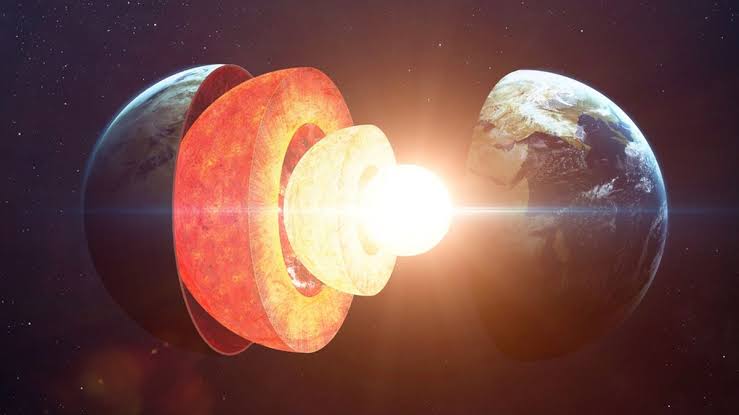Deep beneath the Earth’s surface, where light cannot reach and temperatures soar to unimaginable highs, something strange is happening. For decades, scientists have been meticulously studying earthquake data, uncovering secrets about the planet’s inner workings. Recently, a groundbreaking discovery has been made that challenges our understanding of the Earth’s core. This discovery, reported on June 12 in Nature, reveals that the Earth’s inner core has been rotating slower than its mantle and surface since around 2010.
The Earth’s inner core, a solid sphere composed primarily of iron and nickel, is encased by the liquid outer core. Both layers play crucial roles in generating the Earth’s magnetic field. Historically, it was believed that the inner core rotated at a consistent pace relative to the Earth’s surface. However, new data suggests that this assumption may need revising.
A Controversial Discovery
The revelation builds on a controversial finding from 2023, which proposed that the inner core may reverse its rotation relative to the mantle and surface roughly every 35 years. This finding was met with skepticism by some scientists, who argued that the data could be interpreted differently. Some suggested that the inner core wasn’t rotating independently, while others believed that the rotation could fluctuate over shorter periods.
The New Study
In an attempt to settle the debate, geophysicist John Vidale and his colleagues from the University of Southern California conducted a comprehensive study. They analyzed data from repeating earthquakes—those that struck the same location at different times—between 1991 and 2023. These earthquakes, occurring in the South Sandwich Islands near Antarctica, generated seismic waves that traveled through the Earth’s interior, including the inner core.
The seismic waves recorded by instruments in Alaska created waveforms, or squiggly line graphs, representing ground movements. Vidale’s team searched for matching waveforms from different times to determine if the inner core’s rotation had changed. Out of 200 waveform comparisons, they found 25 matches, suggesting that the inner core flipped its rotation relative to the mantle around 2008. Following this reversal, the inner core began rotating at less than half its previous speed.
Interference in Rotation
Vidale’s team proposes that the inner core’s slower rotation may be due to gravitational interactions with the mantle, which contains about 70% of the Earth’s mass. Denser pockets of the mantle might be exerting a gravitational pull on the inner core, distorting its oscillation. This interference could explain why the inner core is “going back more slowly than it was coming forward.”
To visualize this phenomenon, imagine a bus and a truck driving in the same direction. If the truck decelerates, the bus moves ahead. From the bus driver’s perspective, the truck appears to move backward, even though both vehicles are still traveling forward from a pedestrian’s point of view. Similarly, if someone standing on the Earth’s surface could see the inner core, it would seem to be rotating in the opposite direction compared to a couple of decades ago.
Diverging Opinions
Despite these findings, not all scientists are convinced. Seismologist Lianxing Wen of Stony Brook University argues that the data could be explained by changes in the shape of the inner core’s surface rather than its rotation. He suggests that parts of the inner core may swell or contract over months, altering the waveforms of repeating earthquakes.
Geophysicist Hrvoje Tkalčić of the Australian National University believes the truth lies somewhere in between. He acknowledges the distinct and fluctuating nature of the inner core’s rotation but stresses the need for more data to reach a definitive conclusion.
Looking Ahead
The debate over the inner core’s rotation is far from settled, but ongoing research promises to shed more light on this enigmatic phenomenon. If Vidale’s team’s hypothesis about a roughly 70-year oscillation cycle is correct, the inner core might soon enter a more vigorous phase of rotation. Observing the inner core’s behavior over the next five to ten years could provide valuable insights into its dynamics and help clarify past events.
As scientists continue to probe the depths of our planet, the mysteries of the Earth’s core remind us of how much we still have to learn about the world beneath our feet. The study of the inner core’s rotation not only enhances our understanding of Earth’s geology but also offers a glimpse into the intricate and dynamic processes that shape our planet.


